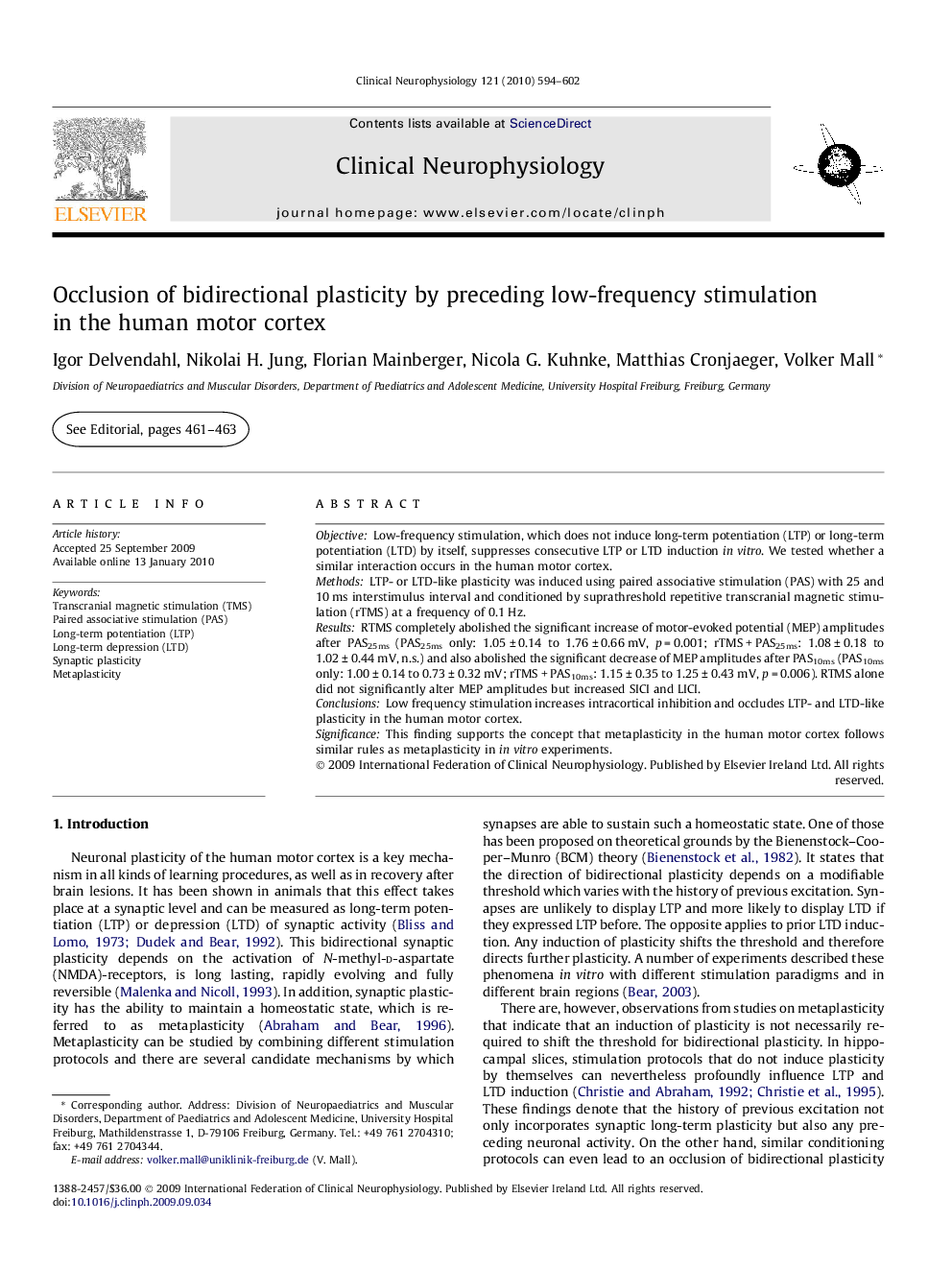| کد مقاله | کد نشریه | سال انتشار | مقاله انگلیسی | نسخه تمام متن |
|---|---|---|---|---|
| 6009206 | 1185039 | 2010 | 9 صفحه PDF | دانلود رایگان |

ObjectiveLow-frequency stimulation, which does not induce long-term potentiation (LTP) or long-term potentiation (LTD) by itself, suppresses consecutive LTP or LTD induction in vitro. We tested whether a similar interaction occurs in the human motor cortex.MethodsLTP- or LTD-like plasticity was induced using paired associative stimulation (PAS) with 25 and 10 ms interstimulus interval and conditioned by suprathreshold repetitive transcranial magnetic stimulation (rTMS) at a frequency of 0.1 Hz.ResultsRTMS completely abolished the significant increase of motor-evoked potential (MEP) amplitudes after PAS25ms (PAS25ms only: 1.05 ± 0.14 to 1.76 ± 0.66 mV, p = 0.001; rTMS + PAS25ms: 1.08 ± 0.18 to 1.02 ± 0.44 mV, n.s.) and also abolished the significant decrease of MEP amplitudes after PAS10ms (PAS10ms only: 1.00 ± 0.14 to 0.73 ± 0.32 mV; rTMS + PAS10ms: 1.15 ± 0.35 to 1.25 ± 0.43 mV, p = 0.006). RTMS alone did not significantly alter MEP amplitudes but increased SICI and LICI.ConclusionsLow frequency stimulation increases intracortical inhibition and occludes LTP- and LTD-like plasticity in the human motor cortex.SignificanceThis finding supports the concept that metaplasticity in the human motor cortex follows similar rules as metaplasticity in in vitro experiments.
Journal: Clinical Neurophysiology - Volume 121, Issue 4, April 2010, Pages 594-602